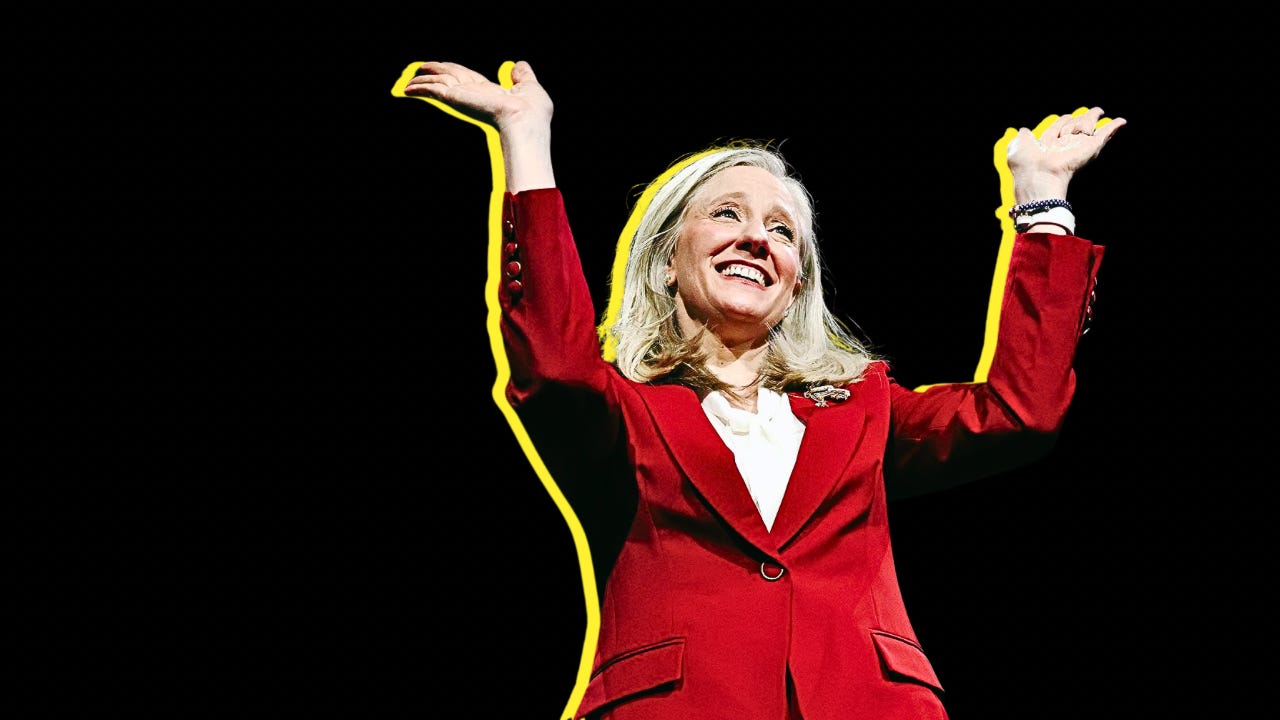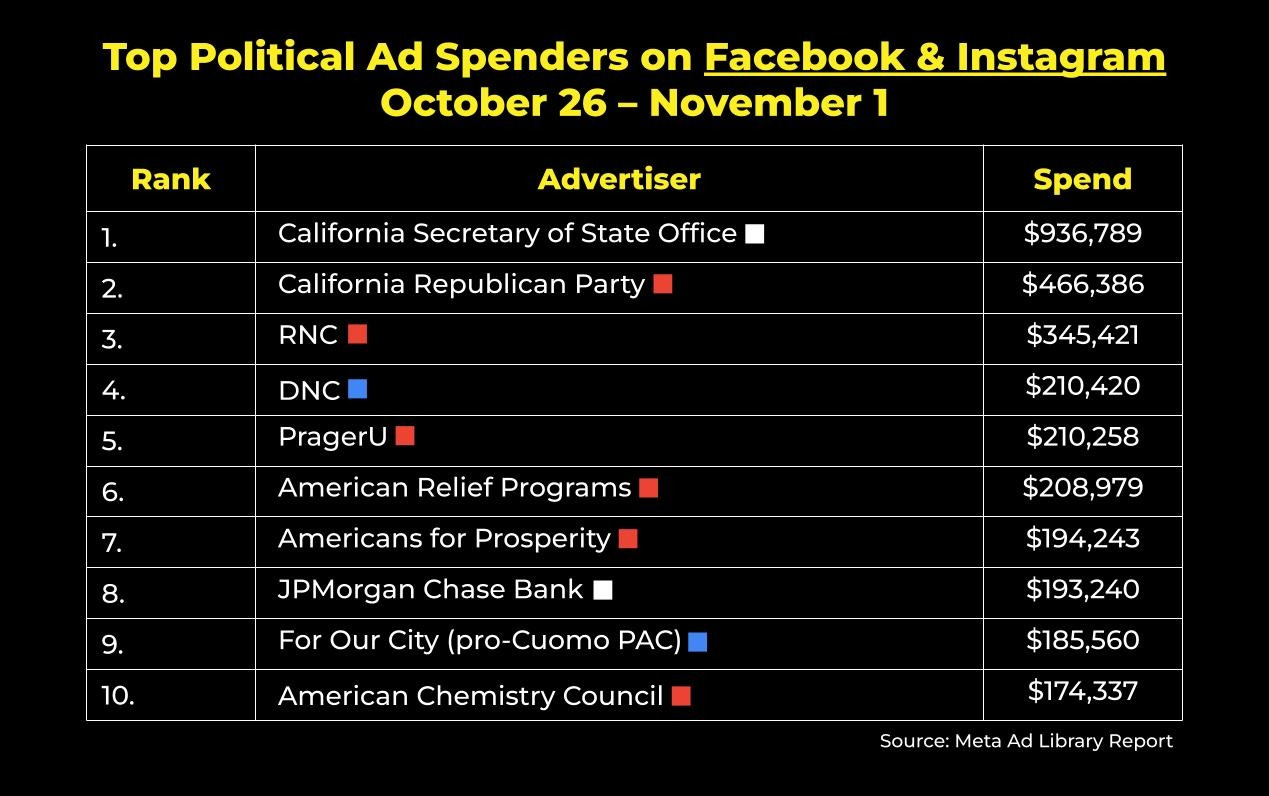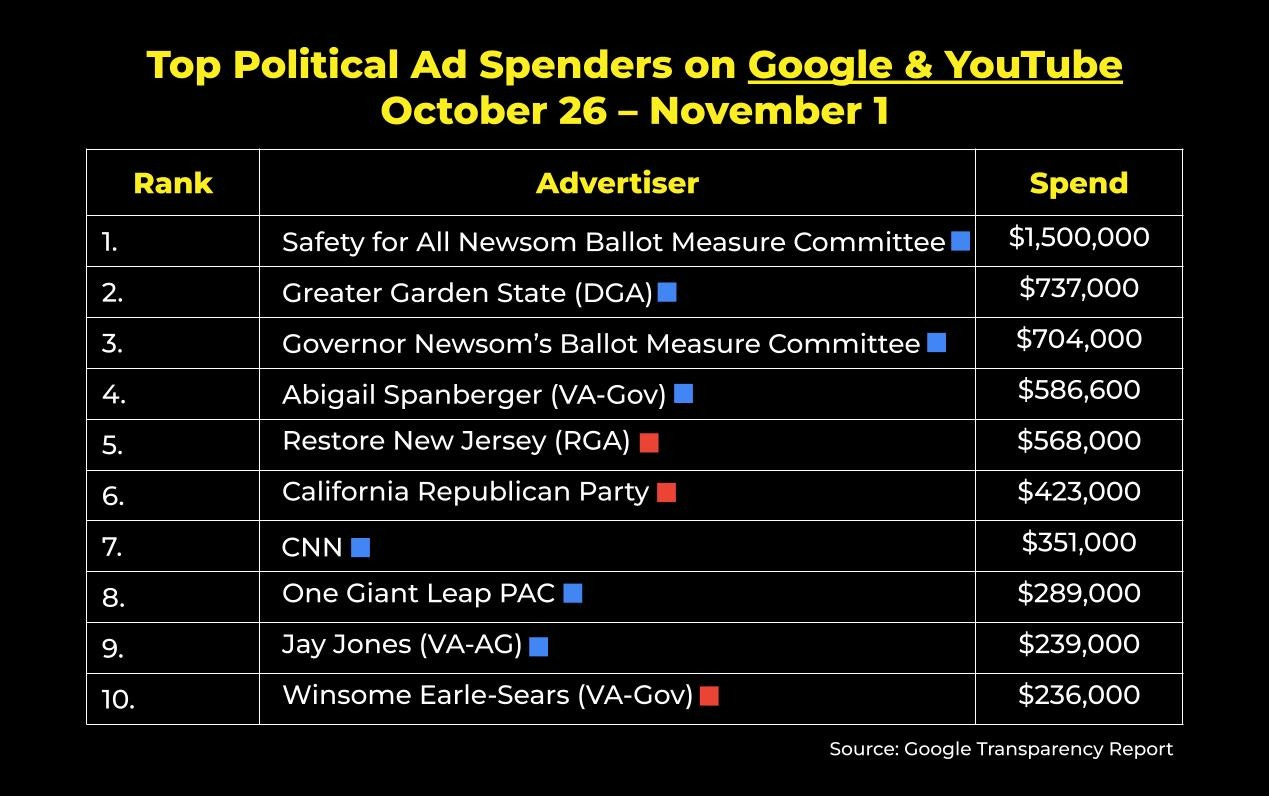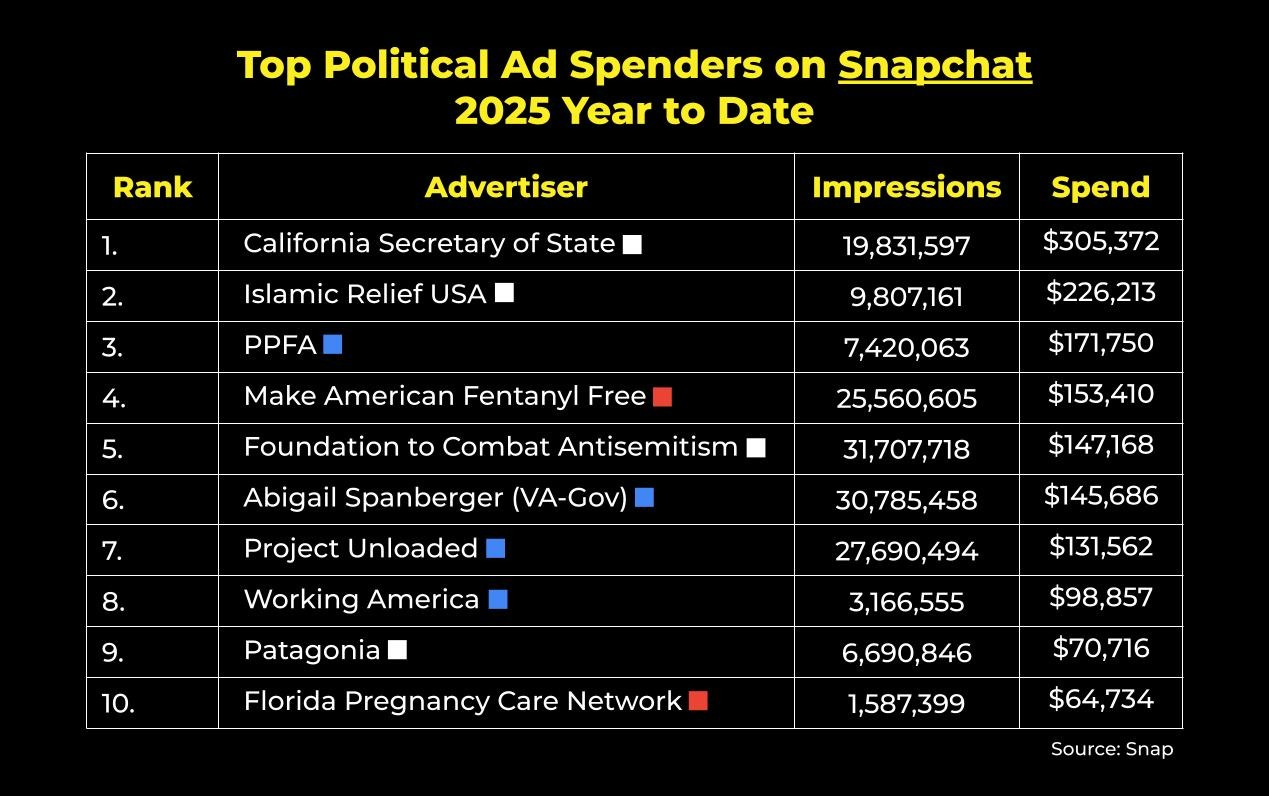The View from Virginia after Election Day
Turns out, the best return on investment this week was “affordability.”
This newsletter is brought to you by the donor acquisition approach that helps you turn $1 into $2.
Hey there,
I’m Michael O’Connor, a Virginia politics reporter for Courier Newsroom’s Virginia outfit, the Dogwood, and today’s guest author. I’m based in Alexandria and I spend my days talking to people, policy analysts, and lawmakers about how Trump administration policies are impacting the state and how people are fighting back.
I also write a newsletter called Virginia Capital (subscribe here) that’s focused on state economic policy and labor issues in a way that puts workers first.
For today’s FWIW, I’m digging into what happened on Election Day earlier this week in Virginia, where, as I’m sure you’ve heard by now, Democrats had a big night. I’ll also look at what it means in the context of our national politics as the focus intensifies on the 2026 midterms and beyond.
More on that below, but first…
Digital ad spending, by the numbers:
FWIW, U.S. political advertisers spent about $18.8 million on Facebook and Instagram ads last week. Here were the top ten spenders nationwide:
While the California Secretary of State office ran nonpartisan English and Spanish language ads encouraging people to vote in Tuesday’s special election, the California Republican Party made a last ditch effort to convince them to vote no on Prop 50. Spoiler alert: it didn’t turn out so well for them.
The For Our City PAC spent nearly $200K on a combination of pro-Cuomo and anti-Mamdani ads in New York City. And well, let’s just say, it didn’t turn out so well for them either.
Meanwhile, political advertisers spent just over $12.5 million on Google and YouTube ads last week. These were the top ten spenders nationwide:
Once again, Gov. Newsom’s prop-50 messaging dominated the ad spend on Google and Youtube with investments of over $2.2M; this time, the California Republican Party… tried (??) to counter it.
Unsurprisingly, advertisers targeting voters in the two states with gubernatorial races made up just over half this list. Total spend in New Jersey came in slightly under $1.6M and was slightly over $1M in Virginia.
On X (formerly Twitter), political advertisers in the U.S. have spent around $10.4 million on ads in 2025. According to X’s political ad disclosure, here are the top spenders year to date:
…and lastly, on Snapchat, political advertisers in the U.S. have spent around $2.5 million on ads in 2025. Here are the top spenders year to date:
Add donors to your list before year-end comes knocking
Join groups like Common Cause, Earthjustice, and Amnesty International who are leaving nothing to chance with Civic Shout. See how you can, too.
The View from Virginia after Election Day
“I am speaking.”
Those three words, uttered last year by Virginia Republican Lt. Gov. Winsome Earle-Sears, went viral this election cycle as part of a negative TV and digital ad for Democrat Abigail Spanberger, who handily defeated Earle-Sears in Tuesday’s governor’s race.
So viral, in fact, that the phrase became what’s known online as a vocal stim – something people just randomly say out loud – and some were actually doing so at the polls on Election Day.
Its spread was probably helped by the fact that Earle-Sears used a similar clip from the same event in an ad of her own in response to Spanberger’s attack. Some saw it as effective, but too late to make an impact.
“She was upset about the ‘I am speaking’ clip and how Democrats were rolling with that, but like, that’s offputting and weird,” Monica Venzke, who works on opposition research for the Super PAC American Bridge, told me.
Spanberger’s ad concluded with a voiceover distilling what, in the end, proved to be the winning message: “Winsome Earle-Sears: so far right she’s wrong for Virginia.“
Spanberger won by 14 points, helped by a huge money advantage over Earle-Sears, who by many accounts was a bad candidate who ran a poor campaign.
Virginia’s gubernatorial race attracted over $45 million worth of ad spending in 2025, according to the Virginia Public Access Project (VPAP). The attorney general’s race saw $24.4 million and the lieutenant governor’s race about $3.5 million.
Courtesy of VPAP, you can see what ads ran when and where, and break them down by broadcast or Facebook. VPAP is a treasure trove of Virginia data for politics nerds, so, if this is your first time seeing it, you’re welcome.
Millions more were spent on Virginia House of Delegates races, That paid off handsomely for Democrats, who flipped a baker’s dozen (13) worth of state House seats that will translate into a 64-36 advantage in the chamber.
In addition to the negative ads, Spanberger and down-ballot Democrats ran on connecting with voters to hear their concerns about, you guessed it (and with apologies to the president), affordability.
“For the Democratic side, I think there was a lot of message discipline on just talking about affordability, talking about loss of health care in particular, that just seemed to be a recurring theme that Democrats were hammering across the board in every locality,” Lynlee Thorne, the political director for Rural Groundgame, told me.
On Election Day, I travelled to three different polling places in Manassas, Bristow, and Stafford where I spoke with about a dozen voters who by and large told me: 1) they didn’t feel great about either party and 2) they wanted a candidate who could try to hold Trump accountable.
In House District 22, Democrat Elizabeth Guzman flipped the district with a nine-point win over incumbent Republican Del. Ian Lovejoy. That race saw $2.2 million in political ad spend, most of it in support of Guzman’s campaign.
On the Sunday before Election Day, I asked Democratic National Committee chairman Ken Martin what Democrats should be doing to convince more Americans that politics matter and that they should support Democrats. Martin said it was “a really fair question” given that trust in institutions and political parties are at an all-time low. He acknowledged that people feel a lot of despair.
“Our job as a Democratic Party is to get out there and give them hope and make sure we present them a plan to actually allow them to not just get by, but get ahead,” Martin told me in a phone interview.
Spanberger pretty much followed this playbook, campaigning on a consistent promise to make Virginia a more affordable place to live, and rolling out detailed policy plans to lower health care, housing, and energy costs.
This anti-Trump and pro-affordability message helped make Spanberger, a former CIA officer and US House member, the first woman elected governor of Virginia.
Her dominance at the top of the ticket created some major coattails that carried an unexpectedly high number of down-ballot Democrats to victory.
State Sen. Ghazala Hashmi beat Republican John Reid by 10 points in the race for lieutenant governor. And Jay Jones overcame a bruising texting scandal—not to mention controversy around a speeding ticket—to beat incumbent Republican Attorney General Jason Miyares. Consider that Jones, warts and all, slightly outperformed Kamala Harris’ showing in Virginia last year, winning 52% of the vote to Harris’ 51%.
Taken together—Spanberger’s running up the score, Jones overcoming a scandal, and massive gains in the House—it added up to the best of all possible outcomes for Virginia Democrats. The results were a solid shot across the bow against Trumpism that bodes well for Democrats heading into the 2026 midterms. (Election season is never over in Virginia.)
Of course, it wasn’t just Virginia where Democrats won big, and it’s worth considering how the election results here relate to the improbable election of Zohran Mamdani as New York City’s next mayor.
No, New York is not Virginia. But there are parallels.
Mamdani was laser-focused on making New York more affordable. He communicated his platform in a way that excited people and was easy to understand.
And as writer John Ganz argues, Mamdani’s position on Palestine—which he was asked about over and over again on the trail—made him sound reasonable and attached to reality, “while the people who were defending Israel tooth and nail and calling everyone else antisemites and terrorists…sounded like the wild-eyed ideologues.”
A similar dynamic played out in Virginia. Spanberger’s message of affordability stood in contrast to far-right fear mongering about trans kids. Her position on the Trump administration’s carving up of the federal government and its attacks on Virginia’s federal workers made her sound reasonable and grounded.
Meanwhile, Earle-Sears repeatedly downplayed the pain of these workers and urged voters to “keep a good thing going” as they struggled to pay for groceries and braced for higher health care bills. This made her sound out of touch with the realities playing out in communities across the commonwealth, especially given its outsized reliance on federal jobs and spending.
A lot is going to be made about how Spanberger and Mamdani are different and represent clashing wings of the Democratic Party.
They do have ideological differences, but they both won with the same message for voters: the Trump administration is making your lives more expensive and it’s Democrats who can fight back against Trump’s worst policies—economic or otherwise—and work to make your lives more affordable.
Add donors to your list before year-end comes knocking
Join groups like Common Cause, Earthjustice, and Amnesty International who are leaving nothing to chance with Civic Shout. See how you can, too.
That’s it for FWIW this week. This email was sent to 24,682 readers. If you enjoy reading this newsletter each week, would you mind sharing it on X/Twitter, Threads, or Bluesky? Have a tip, idea, or feedback? Reply directly to this email.
Support COURIER’s Journalism
Democracy dies behind a paywall, so our journalism is and will always be free to our readers.
But to be able to make that commitment, we need support from folks like you who believe in our mission and support our unique model.









